Contents
chapter 1 introduction to systemverilog
1.1 SystemVerilog origins
1.2 Key enhancements for hardware design
1.3 summary
chapter 2 declaration spaces
2.1 package
2.2 $unit compilation
2.3 declarations in unnamed statement blocks
2.4 sumulation time units and precision
2.5 summary
chapter 3 liteeral values and built-in data types
3.1 enhanced literal value assignments
3.2 `define enhancements
3.3 systemverilog variables
3.4 using 2-state types in RTL models
3.5 relaxation of type rules
3.6 signed and unsigned modifiers
3.7 static and automatic variables
3.8 deterministic variable initialization
3.9 type casting
3.10 Constants
3.11 summary
chapter 4 user defined and enumerated types
4.1 user defined types
4.2 enumerated types
4.3 summary
chapter 5 arrays, structres and unions
5.1 structures
5.2 unions
5.3 arrays
5.4 the foreach array looping construct
5.5 array querying system functions
5.6 the $bits "sizeof" system function
5.7 synamic arrays, associative arrays, sparse arrays and strings
5.8 summary
chapter 6 procedural blocks, tasks and functions
6.1 verilog general purpose always procedural block
6.2 specialized procedural blocks
6.3 enhancements to tasks and functions
6.4 summary
Ch7 Procedural Statements
7.1 new operators
7.2 operand enhancements
7.3 enhanced for loops
7.4 bottom testing do...while loop
7.5 the foreach array looping construct
7.6 new jump statements - break, continue, return
7.7 enhanced block names
7.8 statement labels
7.9 enhanced case statements
7.10 enhanced if...else decisions
7.11 summary
chapter 8 modeling finit state machines with systemverilog
8.1 modeling state machines with enumerated types
8.2 using 2-state types in FSM models
8.3 summary
chapter 9 design hierarchy
9.1 module prototypes
9.2 named ending statements
9.3 nested(local) module declarations
9.4 simplified netlists of module instances
9.5 net aliasing
9.6 passing values through module ports
9.7 reference ports
9.8 enhanced port declarations
9.9 parameterized types
9.10 summary
chapter 10 interfaces
10.1 interface concepts
10.2 interface declarations
10.3 using interfaces as module ports
10.4 instantiating and connecting interfaces
10.5 referencing signals within an interface
10.6 interface modports
10.7 using tasks and functions in interfaces
10.8 using procedural blocks in interfaces
10.9 reconfigurable interfaces
10.10 verification with interfaces
10.11 summary
chapter 11 a complete design modeled with systemverilog
11.1 ATM example
11.2 data abstraction
11.3 interface encapsulation
11.4 design top level: squat
11.5 receivers and transmitters
11.6 testbench
11.7 summary
chapter 12 behavioral and transaction level modeling
12.1 behavioral modeling
12.2 what is a transaction
12.3 transaction level modeling in systemverilog
12.4 transaction level models via interfaces
12.5 bus arbitration
12.6 transactors, adapters, and bus functional models
12.7 more complex transactions
12.8 summary
appendix a the systemverilog formal definition

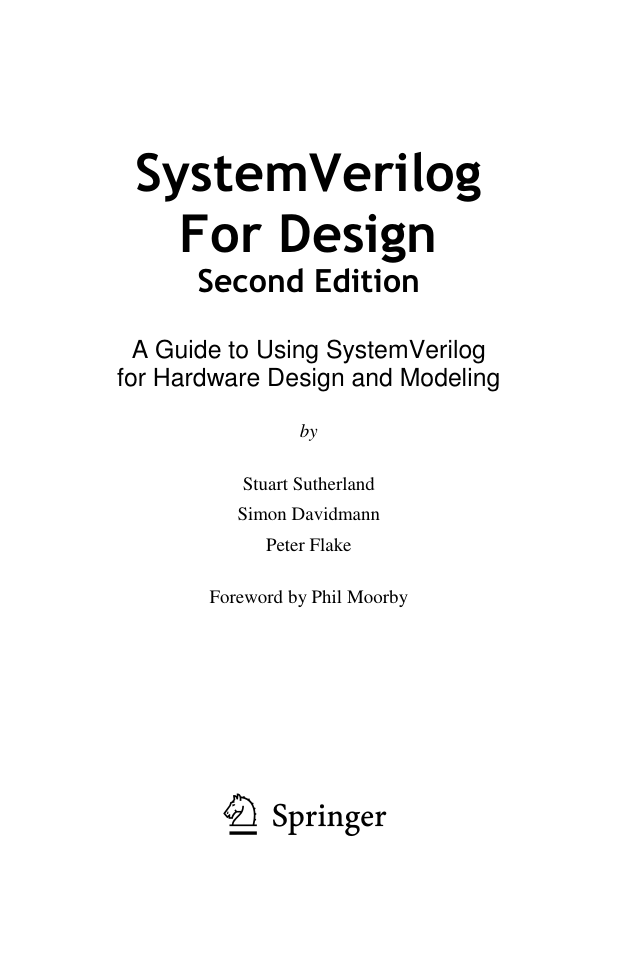
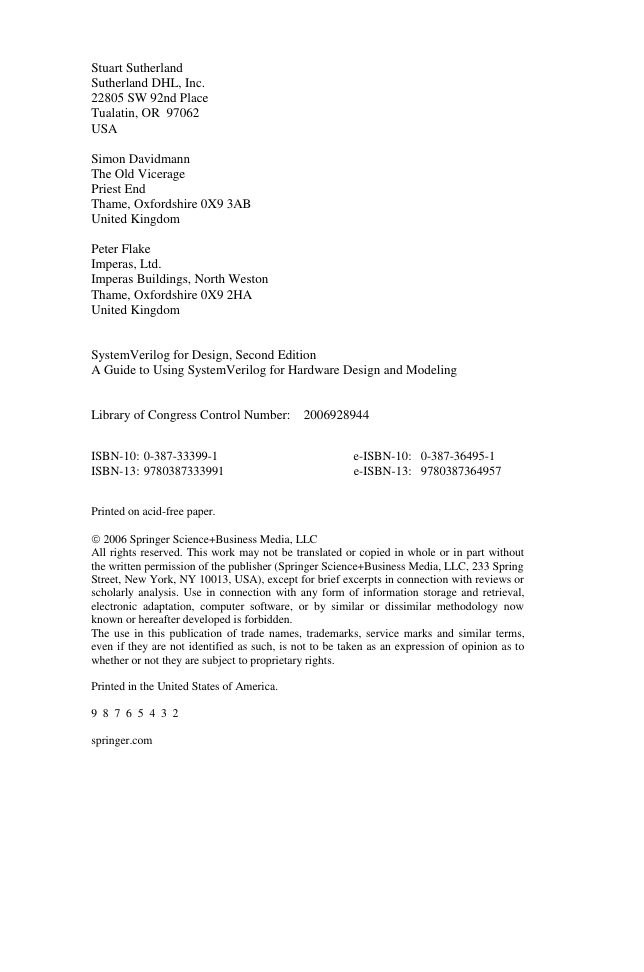
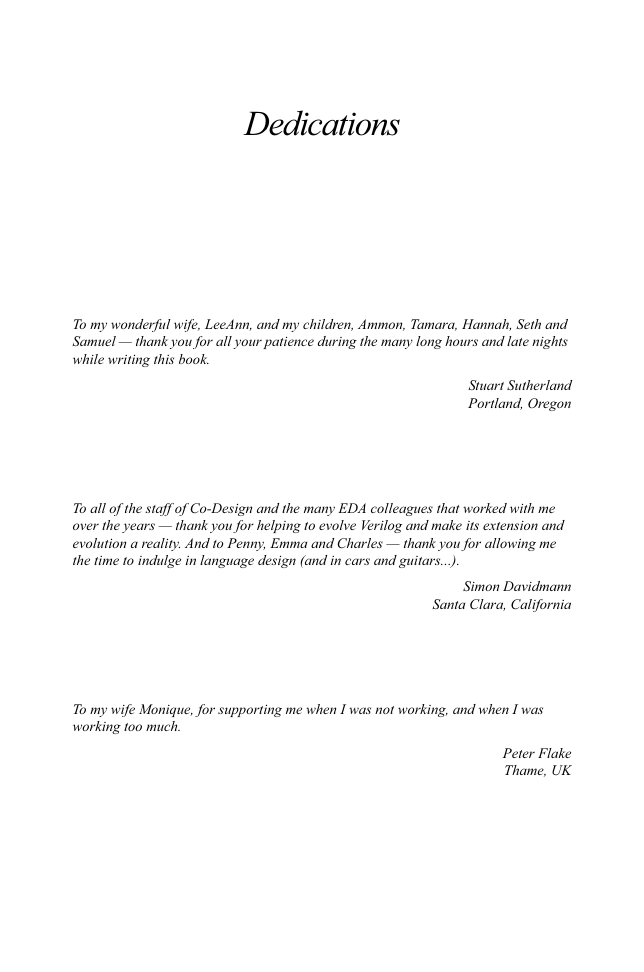
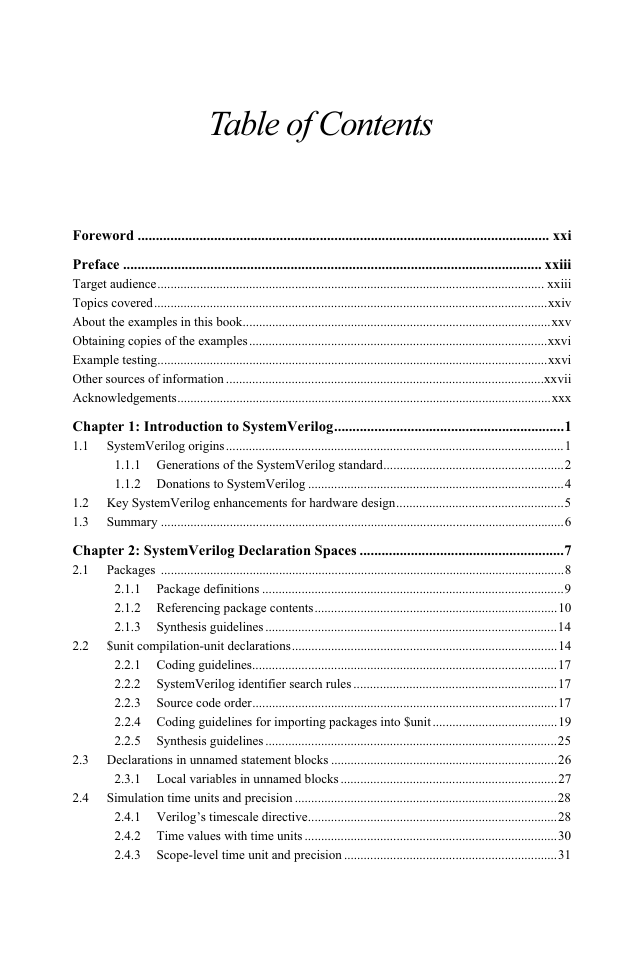
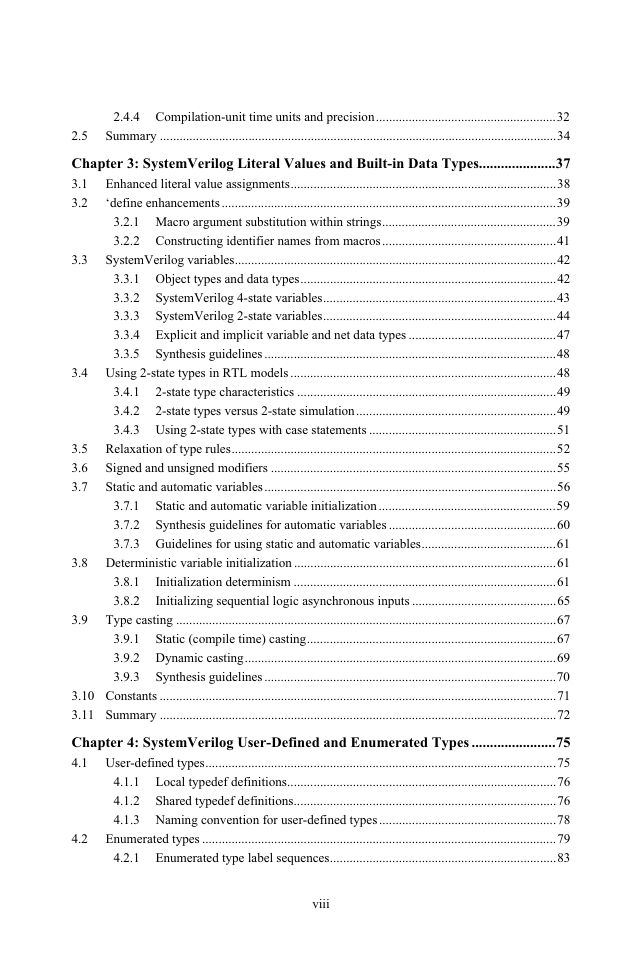

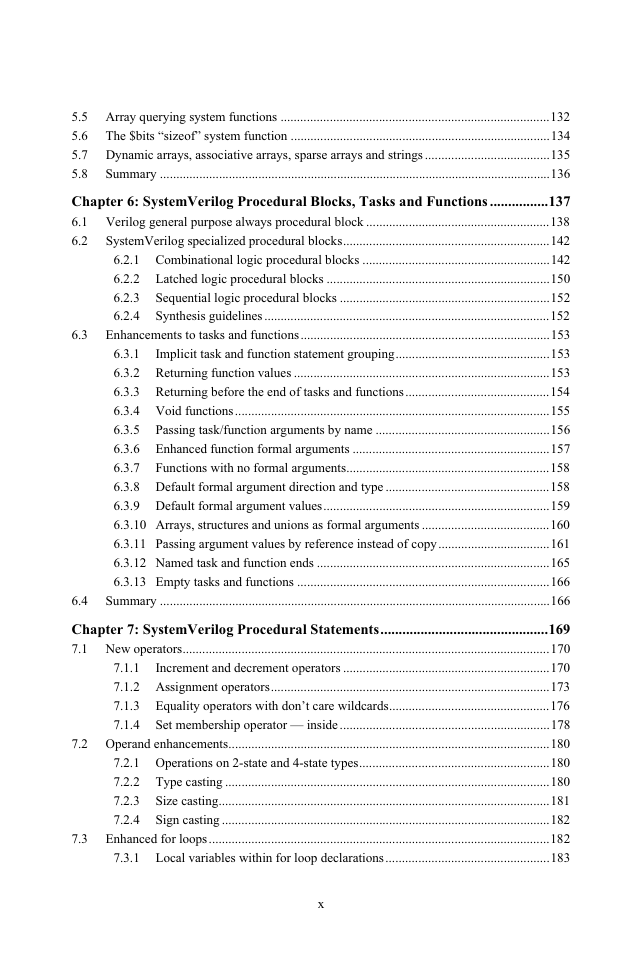








 2023年江西萍乡中考道德与法治真题及答案.doc
2023年江西萍乡中考道德与法治真题及答案.doc 2012年重庆南川中考生物真题及答案.doc
2012年重庆南川中考生物真题及答案.doc 2013年江西师范大学地理学综合及文艺理论基础考研真题.doc
2013年江西师范大学地理学综合及文艺理论基础考研真题.doc 2020年四川甘孜小升初语文真题及答案I卷.doc
2020年四川甘孜小升初语文真题及答案I卷.doc 2020年注册岩土工程师专业基础考试真题及答案.doc
2020年注册岩土工程师专业基础考试真题及答案.doc 2023-2024学年福建省厦门市九年级上学期数学月考试题及答案.doc
2023-2024学年福建省厦门市九年级上学期数学月考试题及答案.doc 2021-2022学年辽宁省沈阳市大东区九年级上学期语文期末试题及答案.doc
2021-2022学年辽宁省沈阳市大东区九年级上学期语文期末试题及答案.doc 2022-2023学年北京东城区初三第一学期物理期末试卷及答案.doc
2022-2023学年北京东城区初三第一学期物理期末试卷及答案.doc 2018上半年江西教师资格初中地理学科知识与教学能力真题及答案.doc
2018上半年江西教师资格初中地理学科知识与教学能力真题及答案.doc 2012年河北国家公务员申论考试真题及答案-省级.doc
2012年河北国家公务员申论考试真题及答案-省级.doc 2020-2021学年江苏省扬州市江都区邵樊片九年级上学期数学第一次质量检测试题及答案.doc
2020-2021学年江苏省扬州市江都区邵樊片九年级上学期数学第一次质量检测试题及答案.doc 2022下半年黑龙江教师资格证中学综合素质真题及答案.doc
2022下半年黑龙江教师资格证中学综合素质真题及答案.doc